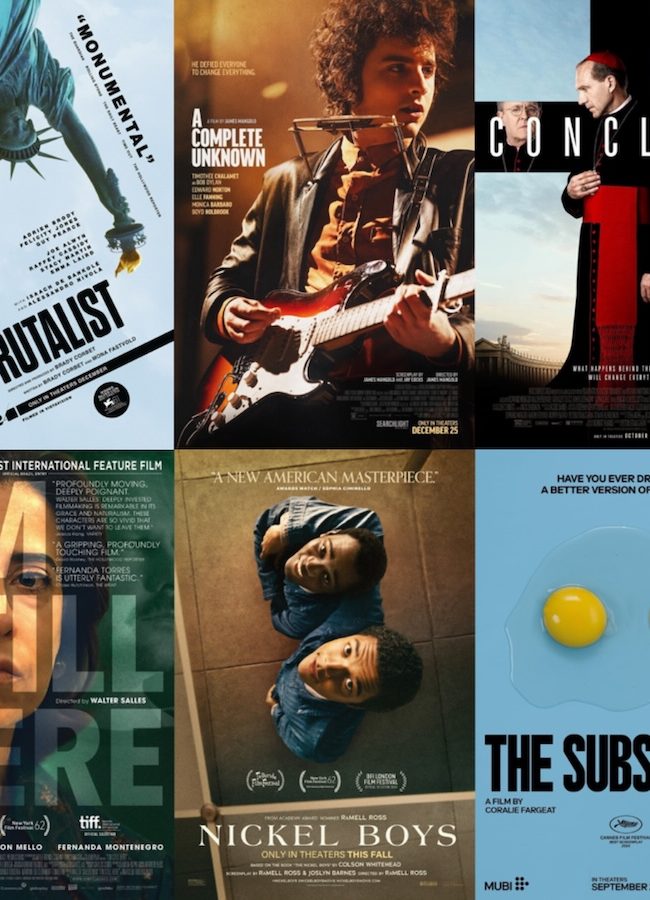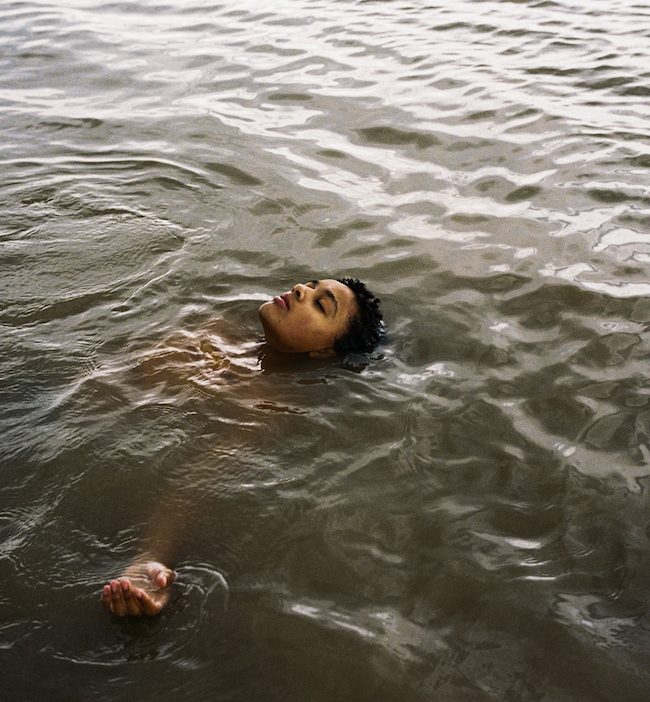A Conversation With Leah Meyerhoff, Natalia Dyer and Peter Vack (I BELIEVE IN UNICORNS)
(I Believe In Unicorns world premiered at the 2014 SXSW Film Festival and just won the Narrative Feature Award at the Atlanta Film Festival. This week, it screens at the Florida Film Festival, Dallas International Film Festival, and Sarasota Film Festival. Visit the film’s official website to learn much more.)
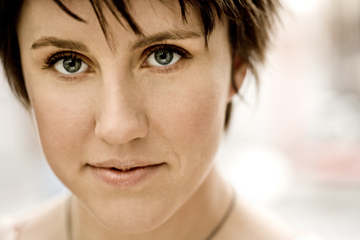 I’m excited to see a new wave of women directors making films that so explicitly and honestly deal with young women and their sexuality. Following in the wake of films like Andrea Arnold’s Fish Tank and Eliza Hittman’s It Felt Like Love, Leah Meyerhoff’s I Believe In Unicorns takes a sharp edge to idealized notions of what it’s like to be a teenage girl. Unicorns stars two young talents: Natalia Dyer as the fragile, imaginative Davina, and Peter Vack as Sterling, the dangerous and exciting older boy she falls for. What begins as an escape on the road schisms into moments of love and fear as Davina struggles to understand Sterling’s often vicious mood swings. What’s so impressive about Meyerhoff’s film is the complexity she allows her characters, especially her young heroine, which is beautifully communicated through the film’s richly layered visual style, from shooting on 16mm film to the elaborate, Jungian time-lapse and stop-motion animation sequences. This visual language mirrors Davina’s increasingly fragmented fantasies and emotional states as she tries to reconcile her desire for Sterling with the reality of being with him.
I’m excited to see a new wave of women directors making films that so explicitly and honestly deal with young women and their sexuality. Following in the wake of films like Andrea Arnold’s Fish Tank and Eliza Hittman’s It Felt Like Love, Leah Meyerhoff’s I Believe In Unicorns takes a sharp edge to idealized notions of what it’s like to be a teenage girl. Unicorns stars two young talents: Natalia Dyer as the fragile, imaginative Davina, and Peter Vack as Sterling, the dangerous and exciting older boy she falls for. What begins as an escape on the road schisms into moments of love and fear as Davina struggles to understand Sterling’s often vicious mood swings. What’s so impressive about Meyerhoff’s film is the complexity she allows her characters, especially her young heroine, which is beautifully communicated through the film’s richly layered visual style, from shooting on 16mm film to the elaborate, Jungian time-lapse and stop-motion animation sequences. This visual language mirrors Davina’s increasingly fragmented fantasies and emotional states as she tries to reconcile her desire for Sterling with the reality of being with him.
I talked to Leah Meyerhoff, and stars Natalia Dyer and Peter Vack at SXSW, where I Believe In Unicorns had its world premiere.
Hammer to Nail: The first thing I noticed is the texture of the film, the visuals, with the animation and fantasies and all of that. How did you develop that language?
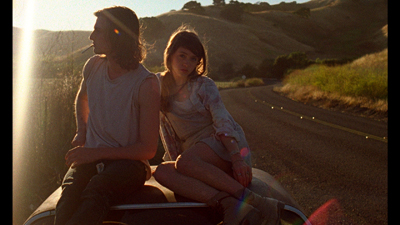 Leah Meyerhoff: I knew going in what I wanted the aesthetic to be because this film was a story about this real, authentic, vulnerable, imaginative 16-year-old girl. And I was hoping that the film would be told through her eyes, and so I wanted to create a look that was something I’d never seen before. And we also wanted to make the visual language of the film as organic and handcrafted and textured and kind of raw-feeling as possible, and we made the decision to shoot on a combination of super-16mm, some straight 16mm, and some super 8. The more fantastical sequences in the film relied more heavily on super 8, and the more social realistic elements of the film relied more on the super-16. We did all of our effects in-camera, the old-school analog way. Overall, I think it created a visual language that emulated the emotional landscape of Davina’s character, and with an organic, specifically feminine approach. This collage dreamscape of looks. So that when her reality became too overwhelming, she would recede into her mind. I wanted that border to be porous and fluid so there’s kind of an organic feel between what her day-to-day life is and what she wants it to be. And the film is really a journey of her character figuring out who she really is, and who this boy is that she’s falling in love with, and her interior world deteriorates at the same time that her exterior world does, so there’s this kind of push and pull. As if there’s this very vibrant fantasy life living just underneath the surface that’s pushing through the pores of reality. And so I worked very closely with our cinematographer Jarin Blaschke on how we would not only create a visual language for the day-to-day realities of the story, but also for the more imaginative sequences. And specifically how we would transition between those worlds, often through the use of light. So we shot a lot of flash frames intentionally so that we could use transitions of light to move between worlds.
Leah Meyerhoff: I knew going in what I wanted the aesthetic to be because this film was a story about this real, authentic, vulnerable, imaginative 16-year-old girl. And I was hoping that the film would be told through her eyes, and so I wanted to create a look that was something I’d never seen before. And we also wanted to make the visual language of the film as organic and handcrafted and textured and kind of raw-feeling as possible, and we made the decision to shoot on a combination of super-16mm, some straight 16mm, and some super 8. The more fantastical sequences in the film relied more heavily on super 8, and the more social realistic elements of the film relied more on the super-16. We did all of our effects in-camera, the old-school analog way. Overall, I think it created a visual language that emulated the emotional landscape of Davina’s character, and with an organic, specifically feminine approach. This collage dreamscape of looks. So that when her reality became too overwhelming, she would recede into her mind. I wanted that border to be porous and fluid so there’s kind of an organic feel between what her day-to-day life is and what she wants it to be. And the film is really a journey of her character figuring out who she really is, and who this boy is that she’s falling in love with, and her interior world deteriorates at the same time that her exterior world does, so there’s this kind of push and pull. As if there’s this very vibrant fantasy life living just underneath the surface that’s pushing through the pores of reality. And so I worked very closely with our cinematographer Jarin Blaschke on how we would not only create a visual language for the day-to-day realities of the story, but also for the more imaginative sequences. And specifically how we would transition between those worlds, often through the use of light. So we shot a lot of flash frames intentionally so that we could use transitions of light to move between worlds.
H2N: Could you all talk about the casting process, how you all came together? It’s such a character-based story. What was the process of developing these characters? So much of it has this raw, immediate, physical feeling.
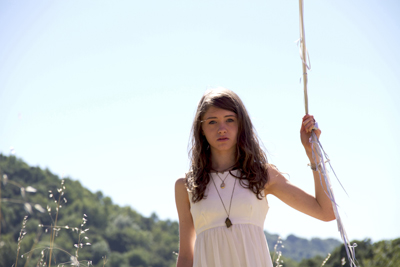 LM: We had a very intensive casting process. I auditioned hundreds of actors, I would say almost a thousand teenage girls, before I met Natalia. And it was very important to me to cast an actress who really was 16, and who brought that innocence and that vulnerability, but also could handle the role, and had maturity. And when I met Natalia I just fell in love with her, and knew that she could take on this character and really bring something of herself to it.
LM: We had a very intensive casting process. I auditioned hundreds of actors, I would say almost a thousand teenage girls, before I met Natalia. And it was very important to me to cast an actress who really was 16, and who brought that innocence and that vulnerability, but also could handle the role, and had maturity. And when I met Natalia I just fell in love with her, and knew that she could take on this character and really bring something of herself to it.
H2N: So Natalia, you were 16 when you shot the film?
Natalia Dyer: I was, yeah, I was really 16. And when I first saw the script, it was honestly the first script I read through that really kind of hit me in the face, in the best way possible. [we laugh] You could read these layers [Leah] was building into it, and it was something I’d never seen before. It was honestly the first role that I was like, “I want this. I want to go after this with everything that I have.” And I’m actually from Nashville, Tennessee, so the way that I’ve been doing it is I put things on tape, and send them.
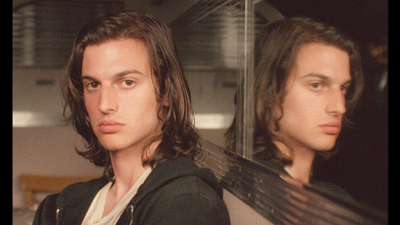 LM: We Skyped a lot. And finally she flew out, and we met in LA. And Peter I met through more traditional casting. It was very important for Sterling’s character to find an actor with a really wide range, and who could work spontaneously, and improvisationally, as well as—I think Peter has a natural charisma and good looks. [we laugh] This kind of sexy, bad boy quality, but then also has a real intelligence and humanity that he can bring to the character as well. It was important for Sterling’s character to have a balance of bad and good, not just be a bad guy but have depth to it. And so the three of us, in working together… the two of them Skyped a lot before we actually met in person. And then we shot out in San Francisco on location, where I grew up, so we went around to a lot of real world locations as a way of researching and kind of developing backstories for the characters. And Peter can speak to that a little bit too.
LM: We Skyped a lot. And finally she flew out, and we met in LA. And Peter I met through more traditional casting. It was very important for Sterling’s character to find an actor with a really wide range, and who could work spontaneously, and improvisationally, as well as—I think Peter has a natural charisma and good looks. [we laugh] This kind of sexy, bad boy quality, but then also has a real intelligence and humanity that he can bring to the character as well. It was important for Sterling’s character to have a balance of bad and good, not just be a bad guy but have depth to it. And so the three of us, in working together… the two of them Skyped a lot before we actually met in person. And then we shot out in San Francisco on location, where I grew up, so we went around to a lot of real world locations as a way of researching and kind of developing backstories for the characters. And Peter can speak to that a little bit too.
Peter Vack: Yeah, one of the things that was most helpful… it’s a personal story for Leah, so she had such a strong idea of who this guy was. And obviously I had my thoughts and feelings about it too, but the world really became deeper once I was cast. [Leah] showed me these punk rock ‘zines, certain music of the East Bay punk scene, a type of music that I wasn’t familiar with. But all of these things are amazing markers… it almost was like a treasure map that she gave me. And the other thing Leah did that was really helpful was she had a strong idea of who this guy was physically, in terms of mannerisms, and we talked very specifically about that. And not every director does.
H2N: Can you give me an example?
PV: Yeah, there was this idea that… I think Davina’s character, she’s a child who was in a sense robbed of her childhood, and she sees in Sterling a very playful, childish energy that he brings. And that was very much Leah’s doing. She had this idea of this guy as being kinetic, and the he was using his hands, and that he would maybe speak in different accents, although I don’t know if that necessarily made it into the film. But there was this sense from the beginning that the character had this very high-pitched internal engine, and that came from Leah. Maybe I would have found that on my own, but not necessarily, and I think that adds a really amazing texture to the film, at least for me, in terms of my work. I felt very supported by those ideas.
H2N: In terms of themes, in the film Davina and Sterling talk about fairy tales, and unicorns, and maidens, and hunters and all of that. When did you come up with these images? Were these concrete ideas you developed? Or did the images come to you in the writing process?
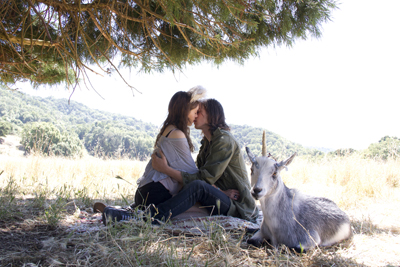 LM: I knew that there would be a unicorn in the movie. [we laugh] And I liked the idea, I liked the symbol of the unicorn as being almost a symbol for Davina’s character. It is on one hand very innocent and child-like—you have like My Little Ponies and stuffed animal unicorns, this very girly aspect to a unicorn—and then there’s also a phallic, sexual, adult aspect to a unicorn as well. I started researching, and there’s a lot of really interesting mythology about unicorns. That they’re a symbol for Christ, they’re in the Bible, they’re these mythical creatures. And there’s a story that only a virgin can tame a unicorn, which ended up kind of working its way into the narrative of the script as well. But yeah, the unicorn stuff was in the script. The stuff that we found on set was more their interactions, and finding that energy to their love story. We worked together individually, both with Davina’s character being more innocent and naïve and kind of running away with this older guy, with Sterling’s character being physically older but emotionally almost younger and playful and child-like, and bringing those two characters together and seeing where that kinetic, volatile energy is going to lead. We shot as much as possible chronologically to keep it fresh… to shoot the kiss scene first and move forward so that it all felt as real and as authentic as possible.
LM: I knew that there would be a unicorn in the movie. [we laugh] And I liked the idea, I liked the symbol of the unicorn as being almost a symbol for Davina’s character. It is on one hand very innocent and child-like—you have like My Little Ponies and stuffed animal unicorns, this very girly aspect to a unicorn—and then there’s also a phallic, sexual, adult aspect to a unicorn as well. I started researching, and there’s a lot of really interesting mythology about unicorns. That they’re a symbol for Christ, they’re in the Bible, they’re these mythical creatures. And there’s a story that only a virgin can tame a unicorn, which ended up kind of working its way into the narrative of the script as well. But yeah, the unicorn stuff was in the script. The stuff that we found on set was more their interactions, and finding that energy to their love story. We worked together individually, both with Davina’s character being more innocent and naïve and kind of running away with this older guy, with Sterling’s character being physically older but emotionally almost younger and playful and child-like, and bringing those two characters together and seeing where that kinetic, volatile energy is going to lead. We shot as much as possible chronologically to keep it fresh… to shoot the kiss scene first and move forward so that it all felt as real and as authentic as possible.
H2N: It is set in the current day? Because I noticed there are no cell phones…
LM: It has a timeless feel, because they really are in their own worlds. And Davina’s character is the type to not have a cell phone, not text, not be on Facebook. And she’s really kind of unusual and artistic and creative, and more interested in her old-school, analog camera and shooting Polaroids and so forth. And Sterling is kind of homeless and drifting… [they laugh]
H2N: Were there any films that were inspirations for you? Or that you all watched or talked about together?
LM: In writing this film, one of the inspirations to make this film was to tell a story about a strong, independent, creative girl that I hadn’t seen that much before. Growing up I didn’t see that many characters on screen that my teenage girlfriends and I related to. There are a handful; The Virgin Suicides comes to mind, I remember Boys Don’t Cry being inspirational for me. Some of Allison Anders’ early films. I actually reached out to her, and she ended up being an executive producer on the film. But I think there definitely could be more stories and more films out there about women, and about young women, and about teenage girls that feel authentic and real and imaginative, like an alternative role model for young women. It’s important to me as a filmmaker to try to create and tell more of those stories. And so we didn’t watch too many films, we more just kind of found our way through… we drew on my personal history, and my memories of being a teenage girl, as well as Natalia’s actual teenage experience at the time. And spoke to lots of other teenagers. And for Sterling’s character, we went to this punk club that really was a punk club where all of these punk kids were living and spent a lot of time with them, and got into their world. I think our references were really much more real world experiences than other art forms, at least in terms of character and such. Visually I had a lot of references, the DP and I looked at photographs, and the production designer.
H2N: The production design was really strong in the film.
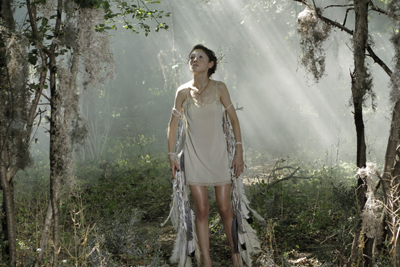 LM: Katie Rusch, yeah, she’s fantastic. I’ve worked with her previously on a couple of music videos. Katie and I, and Jarin actually, together came up with a kind of shorthand language for the film where we divided different scenes into different elements. Bear with me, it sounds a little new-agey!
LM: Katie Rusch, yeah, she’s fantastic. I’ve worked with her previously on a couple of music videos. Katie and I, and Jarin actually, together came up with a kind of shorthand language for the film where we divided different scenes into different elements. Bear with me, it sounds a little new-agey!
H2N: Like nature elements?
LM: Yeah, like nature elements. So there was a kind of earth world, which was Davina’s home world, her Mom’s world has kind of all earth tones to it. And then Davina’s character is a more watery world, with these blues and these purples and these greens, and it was this kind of floating… water became kind of a safe space for Davina. And Sterling’s world was fiery, and blacks and reds, and kind of harder-edged colors, and we had him be a smoker, and there’s these fireworks and sparklers, and kind of connected him to this dragon character. Also we animated with sparklers for that scene. And then there was an air element, which was where the two of them came together, which was about escape, and so there are scenes of them on a trampoline, or there’s a bird. So we kind of came up with this shorthand language that scene to scene we could be like, “Oh, this one’s a water scene, we’re going to shoot it this way,” or, “This one’s an air scene, we’ll shoot it this way.” And the color palettes aligned both with the production design as well as the costumes, which was really fun. I was lucky to have such a talented, awesome crew.
H2N: Did you do any improvisation or was it mostly scripted?
LM: The film was scripted. But we did allow ourselves room to improvise on set. Since we were shooting on film we did not want to over-rehearse, so what we would do is improvise other moments that may have happened just before the scene that we were shooting, to get in the world, to be in character. And then when we said, “Action!” kind of launch into the scenes. We didn’t do that many takes.
H2N: Did you rehearse before production, or this would be like in the morning before shooting?
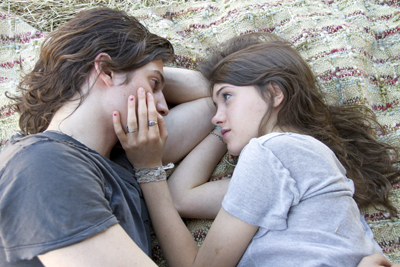 LM: Day of. We had a few days of rehearsal before production as well, for blocking, and to kind of figure out the dynamic, but we wanted this journey to really feel like falling in love in the moment. There wasn’t too much improvising.
LM: Day of. We had a few days of rehearsal before production as well, for blocking, and to kind of figure out the dynamic, but we wanted this journey to really feel like falling in love in the moment. There wasn’t too much improvising.
ND: Occasionally.
PV: There was an improvisatory—if that’s the right word—spirit. But we did stick to the script.
LM: Sometimes on our days off… like Natalia told this beautiful story about cicadas, where she came from in Nashville, and how the cicadas had just come out of the ground, and they have this life cycle of being underground for 17 years, and she said, “And that’s older than I am!” And I was like, “That’s amazing!” and I ended up writing that into the script and it became a scene. So on our days off we would develop things.
H2N: Was this your first feature film?
ND: Yes, for me this was my first major part in a film. Which is exciting, but also nerve-racking! I couldn’t have been welcomed into a more conducive environment for being creative and being vulnerable. It was an incredibly safe set… for the meatier emotional scenes I felt complete liberty to be really raw and vulnerable and give that. So they made it a really smooth first experience for me.
PV: It wasn’t my first feature, but every great experience always feels like a first. And this was a really complete experience for me as an actor. And I don’t always feel that way, and this was just such a great group. And you know when everyone’s operating from a place of love and creativity, and that was this film. One hundred percent, every day. So it felt like a first.
H2N: I’d love to talk a little about the nuts and bolts of production, how many shooting days, the schedule, things like that.
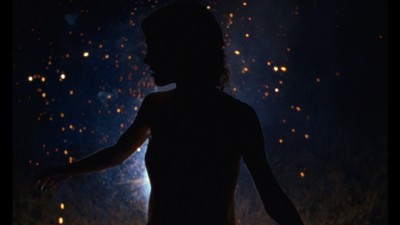 LM: Sure. We shot the film in stages. Principal photography we filmed out in the San Francisco Bay area for 18 days. We went out a bit early to kind of do some rehearsal before we began shooting, but then it was three six-day weeks straight through. And we shot all on real locations. So we shot in my Mom’s house, actually in my teenage bedroom, and my Mom plays the mother character in the film. We shot in my high school, they actually still have a working darkroom. [we laugh] They’re like one of the only high schools in the country where we could still use chemicals to develop film, so that was fortuitous. And locations that I remember from childhood around the Bay area. And a lot of the crew—our sound guy Joe Stillwater was my best friend from high school—the crew came from New York, some people drove up from LA, and then everyone else was local Bay area. We shot super-16 camera all the way through, but I also brought with me my own Bolex and super-8 camera. So for B-roll maybe Jarin’s operating one camera and I’m operating another, we kind of shot two cameras often. And then we did a separate pick-up shoot in upstate New York. We actually got a grant from the Tribeca Film Institute which was very helpful. And we shot for four days, it was just me and Natalia and a small skeleton crew doing some of the more elaborate fantasies.
LM: Sure. We shot the film in stages. Principal photography we filmed out in the San Francisco Bay area for 18 days. We went out a bit early to kind of do some rehearsal before we began shooting, but then it was three six-day weeks straight through. And we shot all on real locations. So we shot in my Mom’s house, actually in my teenage bedroom, and my Mom plays the mother character in the film. We shot in my high school, they actually still have a working darkroom. [we laugh] They’re like one of the only high schools in the country where we could still use chemicals to develop film, so that was fortuitous. And locations that I remember from childhood around the Bay area. And a lot of the crew—our sound guy Joe Stillwater was my best friend from high school—the crew came from New York, some people drove up from LA, and then everyone else was local Bay area. We shot super-16 camera all the way through, but I also brought with me my own Bolex and super-8 camera. So for B-roll maybe Jarin’s operating one camera and I’m operating another, we kind of shot two cameras often. And then we did a separate pick-up shoot in upstate New York. We actually got a grant from the Tribeca Film Institute which was very helpful. And we shot for four days, it was just me and Natalia and a small skeleton crew doing some of the more elaborate fantasies.
H2N: With the leaves?
[They laugh] The leaves, and the vines, and we buried her in the dirt underground, and she shot a flaming arrow, and we had a scene lit by fireworks… The things that were more time-extensive and more experimental in terms of their camera processes. I was actually working with a separate DP for that who I went to NYU with, a guy named Shlomo Godder. We set that as a separate shoot so that we’d have the freedom to really take the time for the more visual elements and stop-motion animation, which is incredibly time-consuming. And in doing stop-motion with an actress, we just needed to not have the full crew waiting around for us. And then the third part of the shoot was the animation production, and that also happened in New York with a team of animators, and that took months and months and months. And I think we were one of the only productions to actually animate on film, I think that’s very rare that that’s done. Perhaps for good reason, I was a bit naïve! [we laugh] I was like, “It has to be on film!” And it’s basically animating blind. You don’t have a reference, and you’re just like animating and animating and after a month you send it to the lab and you get it back and you’re like, “Oh, this is what happened, this is what I did.” So that was an adventure as well.
H2N: How long was your whole post-production?
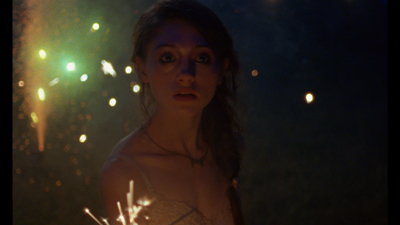 LM: Post was about a year. I went through the Edit Center program, and they sunk up the dailies, and we started cutting all the stuff that we shot during principal and second unit photography together, but then the animation extended the process. I worked with Michael Taylor, who’s a genius editor, and a guy named Kevin Messman, who was our supervising editor, I went to Brown with him for undergrad. And so we kind of edited the film knowing that we were missing some pieces. We actually made animatics, we did hand-drawn storyboards to fill in where we knew there would be animation while waiting for the animation to be completed.
LM: Post was about a year. I went through the Edit Center program, and they sunk up the dailies, and we started cutting all the stuff that we shot during principal and second unit photography together, but then the animation extended the process. I worked with Michael Taylor, who’s a genius editor, and a guy named Kevin Messman, who was our supervising editor, I went to Brown with him for undergrad. And so we kind of edited the film knowing that we were missing some pieces. We actually made animatics, we did hand-drawn storyboards to fill in where we knew there would be animation while waiting for the animation to be completed.
H2N: I really appreciated that it was shot on film.
LM: Yeah, no one does that anymore. We got all of our film donated from Fuji, and I’m pretty sure they’re now not making film anymore. And we used Polaroids, and now Polaroid closed down. If there was ever a time to do it, this was the time.
H2N: I have to ask, have you seen the movie The Last Unicorn?
LM: I have! You know, The Last Unicorn and Legend both were like two of my favorite movies when I was a young kid. And I think that maybe subconsciously worked their way in [to this film] too.
H2N: What are your plans for the future?
LM: In the long-term I’m working on a new script for my next feature, and in the immediate future I am going to be traveling with this film. We have about a dozen festivals lined up after SXSW, and we’ll be traveling the world. And I’m really looking forward to bringing this film to a festival audience as well as an audience of teenagers. Early on I knew that I wanted this film to reach as many young people as possible so we’ve been building up an audience, we have almost a hundred thousand Facebook fans, so we’re kind of building up an online audience in conjunction with our theatrical tour.
ND: I go to NYU, so next for me is midterms, next week! But I’d really love to follow this film to festivals and just see what happens.
PV: I made a short film, it’s in the narrative competition at SXSW, it’s called Send, and actually it stars Julia Garner who was also in Unicorns, that’s how I met her. So I would love to follow that to festivals. And as an actor, always looking for work! [we laugh]
— Susanna Locascio








